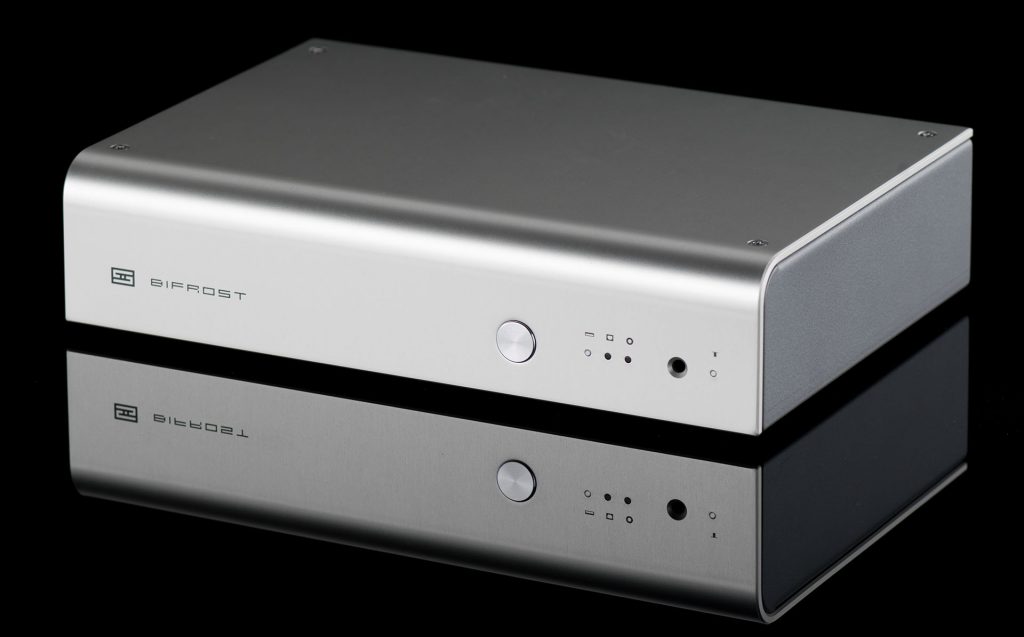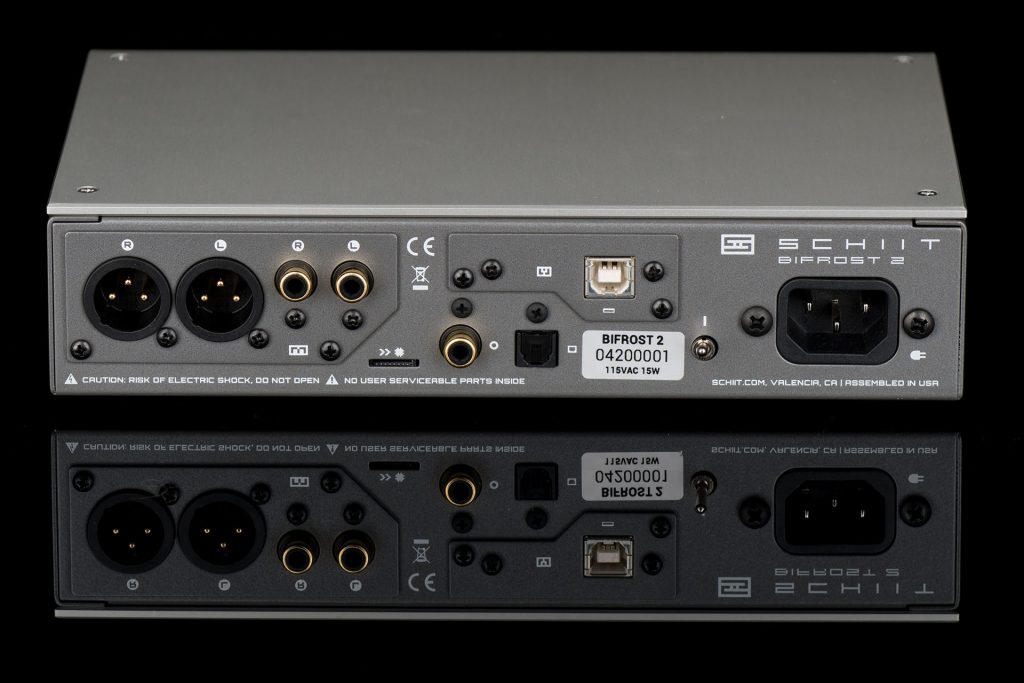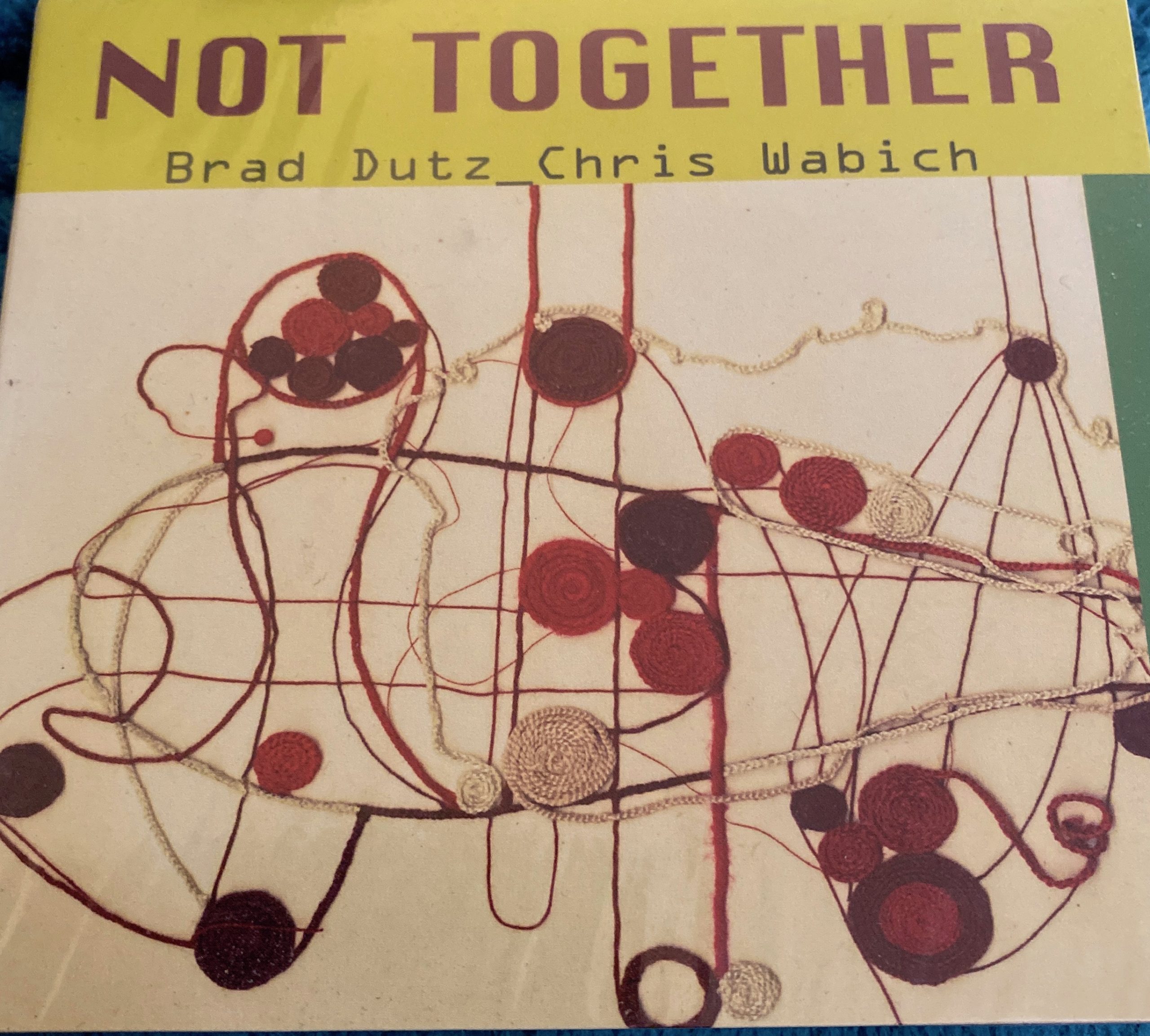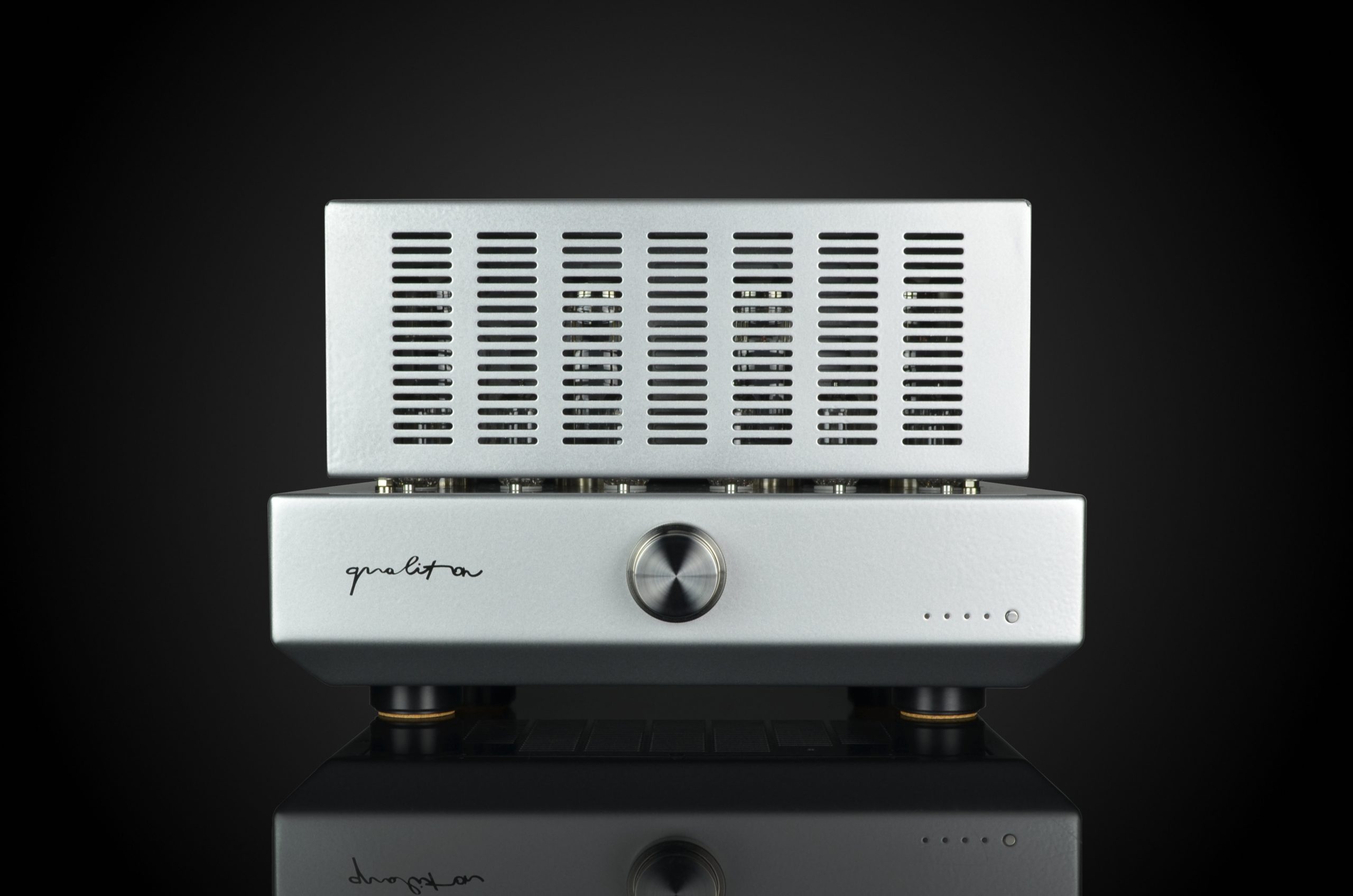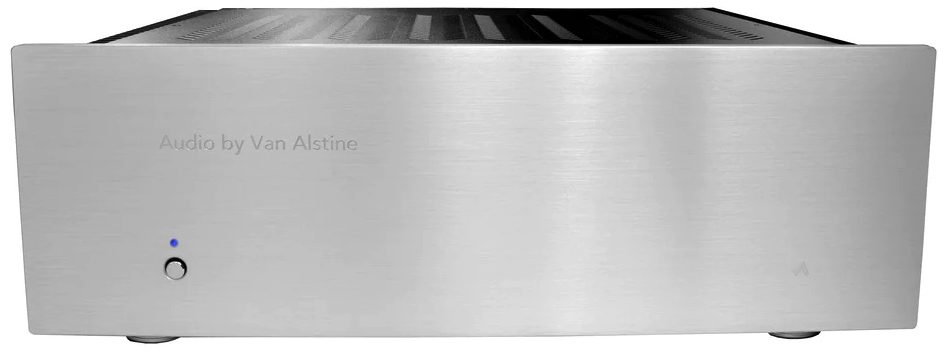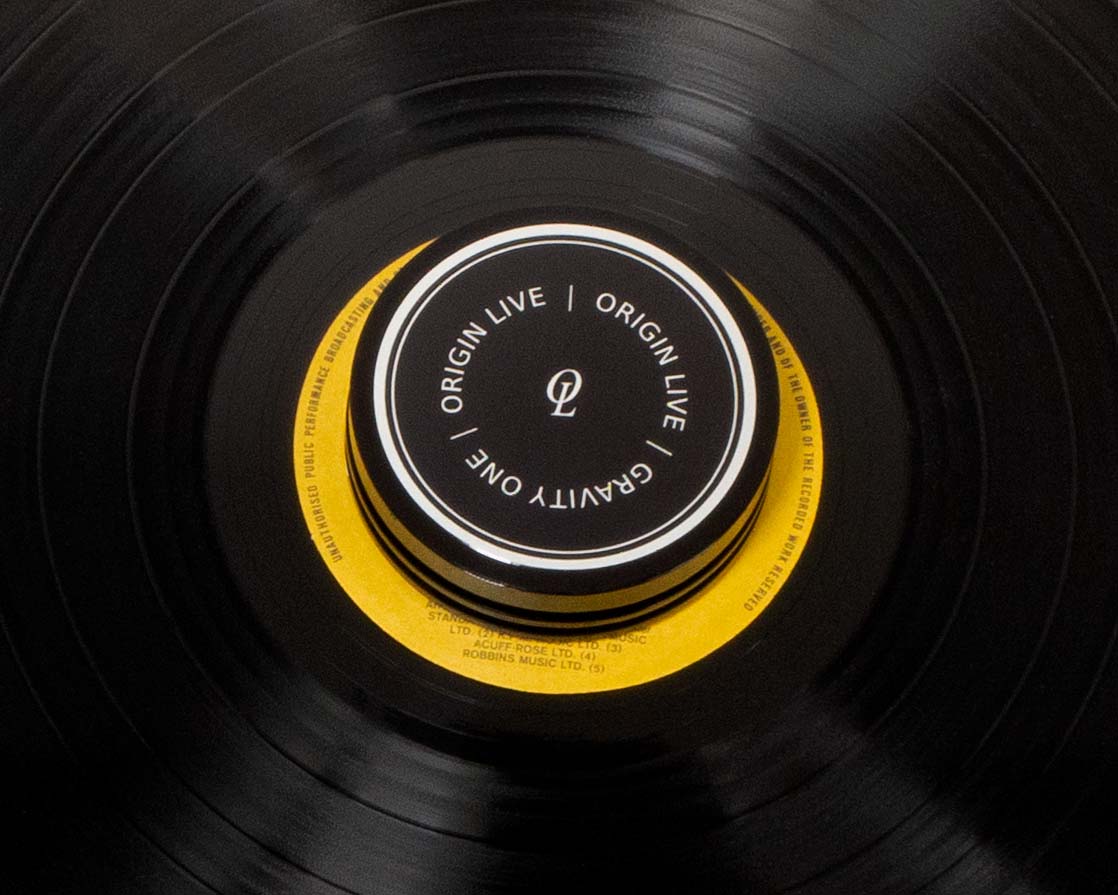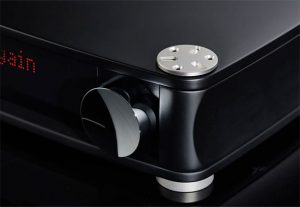In an industry with speakers that cost three times the median house price in the United States, ($280,000, per zillow.com on May 16, 2020) good value is welcome. While the world is the oyster, or pocket change, for some, many of the rest of us need a little Santa Claus action. Unfortunately, Virginia, there isn't a Santa Claus. There is, however, a Schiit Audio!
Schiit, the company, was named by Jason Stoddard during their development cycle. Complaining that he had so much Schiit to do, it became a joke that stuck around. Though their name started with whimsy, their products are serious business. They've created a niche for themselves by breaking from many of audio's conventions. Many manufacturers have fled the United States manufacturing pool for the cheaper labor pool in China. An overwhelmingly large percentage of Schiit's products are made here in the U.S. of A. Standing convention on its head, most of the Schiit gear is manufactured in the supposedly too expensive California.
Mike Moffat and Jason Stoddard, the latter is sometimes called the SchiitHead for his naming acumen, are Schiit's principles. They have have advanced and embraced many of the obvious puns. Despite their scatological naming, their products are highly prized goodies, a real success story. In nine short years, they've become a model of very good value at a low cost, perhaps almost the de facto standard.
Their business paradigm started with direct sales. That cuts out one layer of margin, making products more affordable right out of the gate. None of their products exceed $2500, and are housed in "just right sized" smaller chassis instead of the usual, large 17" chassis. Who would sell size 15 shoes to house the majority of feet that are smaller? Apparently, only audio companies, as that's been the model for years. "Just right sized" should also work to cut down on metal, shipping, and container costs. Although in a breakthrough, the Bifrost 2 is available in silver and "black." Schiit's business model is only a part of their paradigm breaking, their thinking also pervades their product thinking.
Their new iterations of digital gear do not employ Burr-Brown 1704 chips, ESS chips, or other magic recipes shared and altered across this industry. One business model is do the same thing, but cheaper, which often means copy and cut corners. Rather than a new "Toll House Cookie" recipe, Mike Moffat, the digital maestro of Schiit, employs Analog Devices' AD5781ARUZ x 2. A proprietary time- and frequency-domain optimized digital filter is implemented on Analog Devices' SHARC DSP processor, running 8X oversampling.
The analog output stage is based on Texas Instruments' LME49724 amplifier, used for both balanced and single-ended output and is direct coupled throughout. The signal to noise ratio is what would be unheard of in the early days of my audio interest, 114dB, but which is more and more common place these days. My experience has been in the "old days" of the 1990s, finding a good DAC for your system involved a lot of balancing. These days it's much easier.
The Bifrost 2 on the operating table today has three digital inputs: Coaxial S/PDIF, Optical S/PDIF and USB. All inputs are capable of up to 24-bit 192kHz. The input receiver for S/PDIF (coaxial and optical) is the AK4113 chip. What's new with this Bifrost is the deployment of Schiit's Unison™ USB input, based on Microchip's PIC32 microprocessor. What is this Unison thing?
Per Schiit's website here's what's interesting about Unison:
- It is a USB input receiver based on a Microchip PIC32 microprocessor with Schiit's proprietary code.
- Complete electromagnetic and electrostatic isolation.
- Self-power by the DAC for the critical low-noise re-clocking and latching sections.
- Precision local clocks for both 44.1 and 48k multiples.
- NO SUPPORT FOR ANTIQUE WINDOWS. If you're not on Windows 10, stick to Gen 5.
- Older Bifrost, Gungnir and Yggdrasils can be upgraded to the Unison at a $200 surcharge.
In a nice touch for the environment, the Bifrost 2 is upgradeable in the field. It has two cards, ala computers: 1) the DAC and analog card; and 2) a USB input card. Both can be swapped out, like computer cards, in the comfort of your home using only a small Philips head screwdriver. A MicroSD card slot is there for firmware updates in the future, if or when they become available.
In a surprise the darned inexpensive Bifrost 2 has a very solid, if small, remote control that allows you to switch sources, invert phase, and mute sound.
I also had on hand an Oppo BDP105 and Classe's Sigma SSP that could do digital duties... however, the convoluted connections of multiple DACs hooked up at one time made comparisons between this bevy of D/As difficult. I have tried to integrate my two channel setup with my home theater. And, it is all connected, but with multiple DACs plugged in, my system is more of an unintegrated Rubik's cube of connections. This is my reason for not including what might seem like useful comparisons to those products.
For a few weeks after my extended time with the Bifrost 2, I borrowed a Bifrost Uber (circa 2014) and then listened with my Schiit Modi Multi Bit ($250). Normally, when reviewing I listen to just get a sense of what I'm hearing, or think I'm hearing. Then, I dig into my catalog to test out my ideas before I write my review. With the various disruptions and anomie running through my life and the post-Covid19 world, I decided to create a structured play list.
Picking songs to listen to review gear is a dicey matter. Normally, when I seek clarity in the face of uncertainty about the sound and hierarchy of gear I listen over and over to songs. Sometimes the songs employed become joyless tools afterward. Doing that with a play list, well that's torture. Not only do I risk ruining a song for pure enjoyment but I risk ruining all of the songs. Here are the leaves I flagellated myself with. I'm interleaving comments regarding each of the DACs with each of the songs. I'll conclude with overall impressions. So, on to the sound of the Bifrost 2.
"Mestizo Waltz," Gabriela Lena Frank, Reference Recordings
This is a large scale orchestral work. Deep bass is the most fun part of the recording, but there is also scale and macro dynamics at play. There are numerous instrumental lines one can follow, with pleasure to make the recording a bit of an adventure. The recording quality is quite good.
Modi - Dynamics are less convincing, with less weight and evidence of individual dynamics. The sound stage is smaller and more tucked in between the speakers.
Bifrost Uber - There is better bottom end heft, though at the cost of a more ponderous presentation. Perhaps, and perhaps not, there is a slight discontinuity between midrange and bass that creates that ponderousness. Differentiation of instrumentals are a bit less clear than with the Modi because the Uber, seems, to have a warmer, fuzzier sound. The language did not occur to me as I was listening, but I'd say there is less resolution apparent with the Uber than with the Modi MB.
Bifrost 2 - There is more space to the recording. Individual instruments are best delineated here, making it easier to hear what's afoot. It's as though the "story" of the music is clearer. At the beginning this is clearly the most realistic presentation. Rhythm is tighter here than with the other DACs and yet has the best deep bass performance.
"Aria (Cantilena) Bachianas Brasilieras No. 5," Heitor Villa Lobos, (featuring Victoria de Los Angeles)
This recording requires an explanation. I listened to nineteen (yes, 19!) recordings of Bachiana Brasilieros before selecting this recording. Other recordings featured better acoustics, better imaging, and a richer tonal balance. Renee Fleming's superior vocal talent was undone, for me, by singing to standout. I was frequently more aware of Flemings' prowess than the song. Similar criticisms had me choose, this, the worst recording quality of them all. With Los Angeles' performance, I found myself at the end of the performance unaware of her technique. Though the recording is lean and bright, the performance was the best I heard.
Modi - Vocals are tonally flatter, less dynamic sounding and occurred more like sound than the recording of human singing. The qualities that make Victoria de Los Angeles a specific singer were a bit muted, such that she was something of a generic singer. Despite the recording quality string tone was good, though it required a bit of guessing and assuming to conclude violins and not a sound generator created the "music." This is not a good recording so it's not terribly damning to say that both recording and reproduction are more generic.
Bifrost Uber - Vocals are a bit more like a live voice. The vocals sound is a bit more beamy and peaked in the midrange. A sense of more drama with the violins, like the ebb and flow of emotion; but they still barely sound like violins.
Bifrost 2 - This presentation was warmer (a good thing and perhaps a coloration), vocals were a little less beamy. There is a greater sense of a singer performing somewhere rather than just a sound emanating from a radio / speaker. String tone is better, not great or making you think it's real, but there is more of a sense of rosin on the bow. With the Bifrost 2, I want to hear the entire song, AGAIN, despite listening over and over and over.
"Japura River," Uakti, Aguas de Amazonia
This is a purely instrumental recording of music composed by Philip Glass. South American rather than European music, percussive and rhythmic rather than melodic, but there is timbre to be distinguished.
Modi - This featured good propulsion and a good sense of a bell-like percussive instrument. Rhythmically nice, maybe a sense of "faster" because there is less lower end weight to the sound than the other DACs.
Bifrost Uber - A bit more weight to bottom end, with the midrange a bit more pesky showing a tinkly quality to struck metal. Breathy instruments strike me as more alive and agile than with the Modi. I am enjoying the presentation, and it is harder to switch to next track on this and Brasilieros - a bit surprising as I've gone through listening to these tracks at least four times in less than two hours.
Bifrost 2 - Better bottom end than the Uber. Better rendering of Tympani (?) at the song's opening. Struck metal sounds more like struck metal and realistic. Good rhythmic qualities. Good propulsive qualities. Engaging song.
"Autumn Leaves," Eddie Higgins Trio, Bewitched
This is the classic Johnny Mercer song, though faster and with more of a lounge act style. If you're not a fan of jazz because you want to hear the melody clearer, this is a very nice mix of the melody being clearly stated but also allowing Higgins to explore the structure of the melody. Not a great recording but more of an invisible, as in unnoticeable quality. There is a "hitch," mistake or intended interruption of a rain of notes between the second and fourth seconds of the track.
Modi - The "hitch" sounds a little less weighty and less like a stumble than a sense of intention. Piano tone has a certain richness, if not weight. Feet tapping, chin bobbing... A nice song.
Bifrost Uber - The hitch more evident as intentional when played a little more loudly. Less development of piano tone, ringing a bit more. Propulsive and "jazzy," I'm not sure whether I prefer the Uber to the Modi. Both are good.
Bifrost 2 - The first four seconds sounds more like an artist at work, however artful, but more artful nonetheless. Better timbre, a bit more warmth in the piano. Standup bass now an instrument rather than low notes emanating from an unknown source. Really enjoying this performance.
"Pana Cand Nu Te Iubiem," Pink Martini, Get Happy
The next two songs are by Pink Martini. PM use two vocalists now: Storm Large is a converted "rock singer" who can belt out a tune, but not necessarily convey as much emotion as her counterpart, China Forbes, whose voice is less powerful but more emotionally evocative.
I've used this song over and over in reviews because it never fails to elicit an emotional response and it's melodies are richly hued. My junior year of college I dated a very emotional woman. The song almost always sounds like the train wreck my junior year was, the song is hard to look (listen) away from. The drama in this song remakes itself each time I listen to it, happily far away from the experience itself. Here is a snippet of the translation of the Romanian to English (the whole thing is exhausting):
But now that I love you
Longing, oh longing...
I can get no rest
Longing, oh longing...
I leave the house to go somewhere
Longing, oh longing...
I don`t know which way to go
Longing, oh longing...
My poor heart
Longing, oh longing...
Won't give up on you
Longing, oh longing...
Phew! Just re-reading the lyrics makes me tired.
Modi - Listening feels dramatic. The lethargic reliving of ennui is well (though necessarily, slowly) paced. There is a bit of a wispy quality to Storm Large's singing here. There is, however, an emotional connection to the performance.
Bifrost Uber - In place of the wispy vocal quality, it's now a mix of breathy and a ringing in the recording. Strings have more of a sweeping quality, triangle jumps out around the 3 minute mark. The stringed instrument sounds more plucked with timbre present and evident.
Bifrost 2 - Vocals are a mix of vocal rasp and microphone. The song is slightly more ponderous, consonant with the underlying melodrama of the song. Great theater to "watch" and experience. Vocal sounds are warmer, fuller and emotions are better communicated. Triangles positively jump out. I notice there is a butterfly flitting of a high pitched instrument clearer as part of an orchestrated sound because it's better coupled to the rising tone of strings. Now it's more like listening to a slow train wreck of angst and ...
"Let's Never Stop Falling in Love," Pink Martini, Hang on Little Tomato
Sung by Forbes, this is just a lovely and upbeat song with an attractive emotion, counterposed to Pana... Again, rich melodically, though singing about a celebration just evokes less emotion than drama and sorrow.
Modi - China Forbes' frequent wispy quality is here. There is good rhythm as expected, upbeat and fairly good separation on an acceptable but unexceptional recording.
Bifrost Uber - The opening strings are not particularly good. Is that on the recording? Not sure, but it's not convincing; I'll lay it on the recording/room interface. Vocals are less breathy here and more like Forbes singing into a microphone that's over driven in her range. Still a fun recording.
Bifrost 2 - The opening strings, sound like strings. China Forbes vocals well done and enjoyable. Richer in tone and trills. Presentation has me wanting to sing along, even if the rest of the house doesn't.
"Simple As This," Jake Bugg, Jake Bugg
Jake Bugg is a young singer with a sweet but slightly nasal quality but not a lot of vocal range. It's a good song to listen to because... it's a good song, however well recorded or orchestrated.
Modi - Vocals have a bit of a "beamy" maybe the mic is a bit over driven. Guitar tone and timbre are clearer, even if guitar is largely a struck sound rather than one showing sustained tone. Bass also warm, reasonably full and propulsive.
Bifrost Uber - There is less of a beamy quality to Jake Bugg's vocals. Better delineation of vocal modulation though not a lot of space for vocals to open up. Guitar still sounds mostly like a struck instrument without much tonal development. Recorded echo qualities are more obvious but not terrible. Decent bottom end.
Bifrost 2 - Beamy quality is attenuated and now he sounds like a singer who existed "live" at some point. Guitar timbre is still not particularly clear, attack and strum evident, but not as clearly a guitar. Still a fun song to listen to.
"You Make Me Feel So Young," Frank Sinatra, Songs for Swingin' Lovers
Modi - Nice warm palette to vocals. Jaunty quality present, very little sense of Frank being in front of you. But the timbre of his voice was pretty good, if a bit overbuffed.
Bifrost - Good rhythmic qualities. Timing of Sinatra's singing is pretty evident and makes it seem clearer why he's well regarded for both is jazz and pop singing.
Bifrost 2 - Best vocal reproduction. Warmth, tone and resonance. Clearly the best presentation.
The Bifrost 2 also includes a small remote. The remote allows you to switch sources on the Bifrost, e.g. from USB to Toslink to Coaxial, as well as a phase switch. I have a few small remotes right now: one for my Apple TV, my Classe Sigma SSP, and now the Schiit shaker, er, remote. I like small, but I'll confess I'm not a fan of hunting down one remote, let alone, three. The Schiit remote will be welcome in a simpler system, but it did not provide ease in this reviewer's system.
I've never been aware that I was sensitive to recordings being in or out of phase. However, I believe I heard differences with the Bifrost 2, but not always. When I did hear a difference my experience was of reduction or enhancing "hash" in playback. I heard a slightly clearer sense of rhythm with Uakti, though the biggest difference was with the piano music on "Autumn Leaves," which seemed richer and more rhythmic. I expect a lot of people would welcome phase inversion on this DAC.
Putting a wrapper on the Bifrost 2. Overall, I found the Modi Multi Bit and Bifrost Uber to be neck and neck with differences relating to source material more than one being better overall than the other. It was a step above the sound of my Oppo BD105, though less warm. The Oppo presented recordings more generically. I also preferred the Bifrost 2 to the digital dancing of my Classe Sigma SSP where the Bifrost's tone and timbre seemed more realistic and dynamic shading was superior.
But, when it came to the Bifrost Uber and the Bifrost 2, I preferred the Bifrost 2 nearly all the time. The Bifrost Uber is warmer, less resolving and more a pleasant experience, but presented music more generically. Compared to the Bifrost Uber, it was clearer and a bit more illuminated than its darker, fuzzier progenitor. The cost of greater clarity was simply seeing what was on the recording and is that a penalty? I don't think so. But don't read greater clarity of recording quality as ruthlessly revealing. This is neither a presentation with sharp, nasty angles, nor one dripping with saturated tone. It's an evenly balanced, welcome DAC that will do well in most systems because it's not going to tip the cart one direction or another. This iteration of my system places every component at about ten times the price of the Bifrost 2, so it's fairly lofty company with which the Bifrost was good company.
Schiit's own Gungnir Multi Bit ($1299) is richer, more revealing, and a livelier performer. Prism Audio's Callia ($2799) was more detailed and offered a richer insight into the structure, if not the meaning of music, with a "just the facts," presentation. LampizatOr's Euforia ($2130 before being discontinued) was clearer, cleaner and a more compelling sound. All of the DACs in this paragraph are two, three, and four times the price of the Bifrost 2. Throughout my review period, I enjoyed my listening experience. There is "more" available as you scale the ruinous heights of DACs, but if you want plug and play enjoyment, the Bifrost 2 can deliver.
Bifrost 2 DAC
Retail: $699
Schiit Audio
22508 Market Street
Newhall, CA 91321




